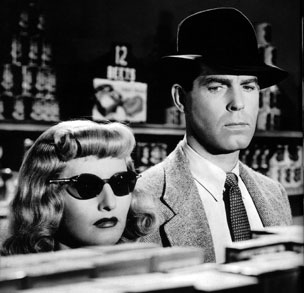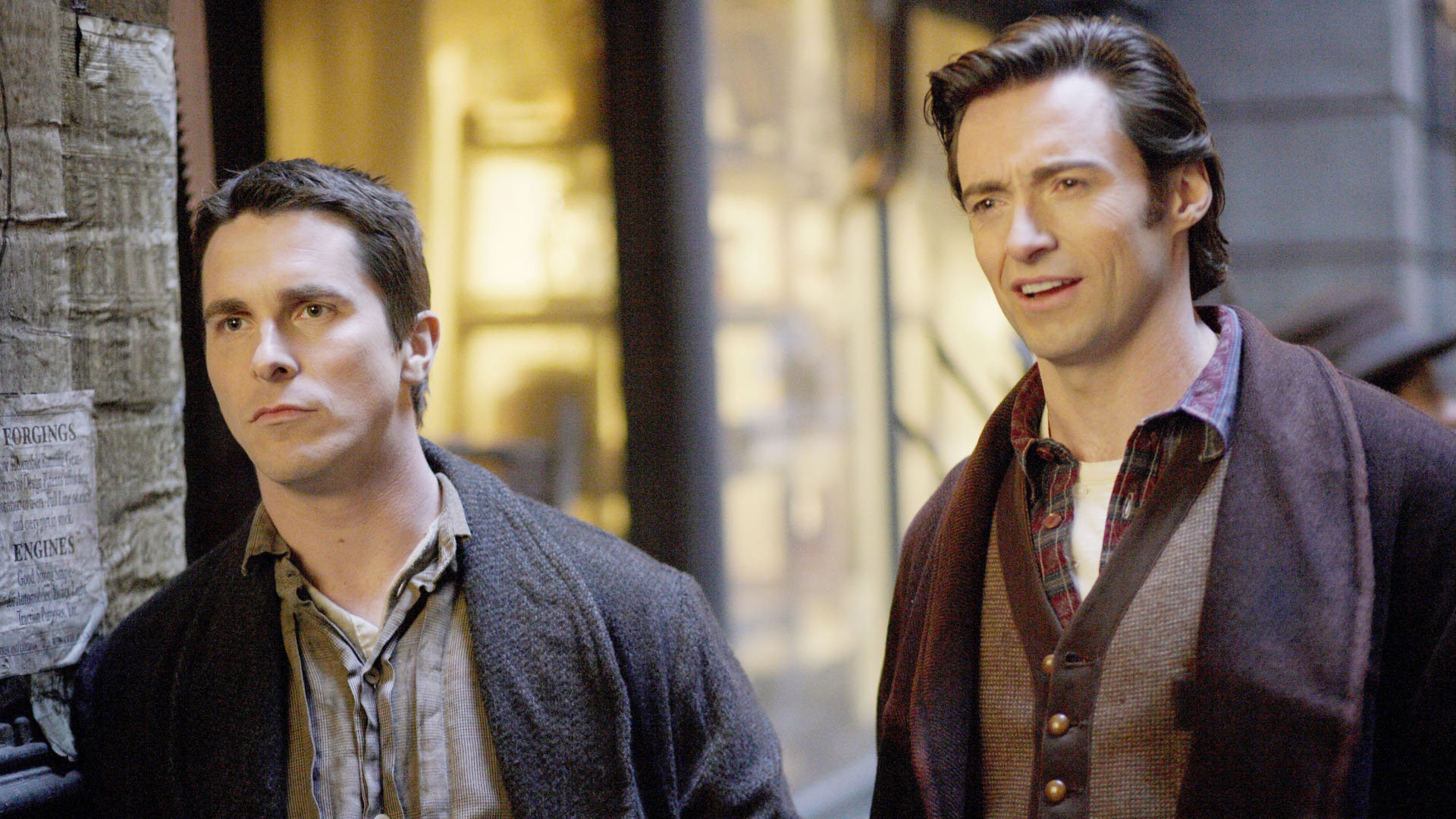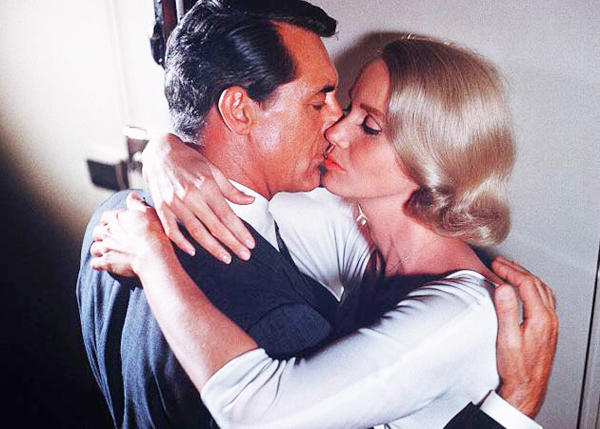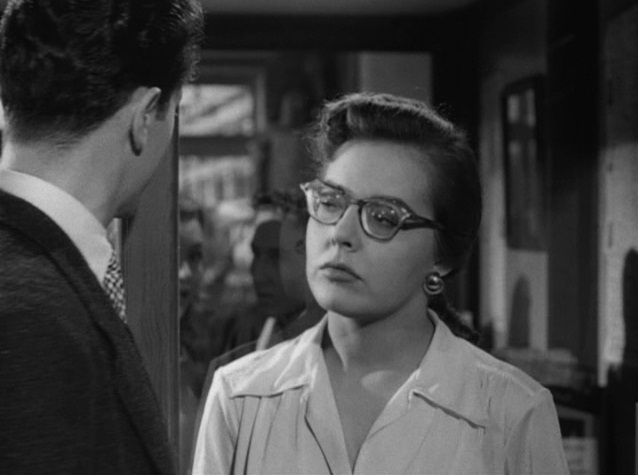Film
noir is a genre that is characterized by cynicism, duplicity, and above all
moral ambiguity. The genre began as an American post World War II variation on
early European expressionist films, which in turn came about as a response to
the horrors of World War I. Since its hey-day in the 1940’s and 1950’s film
noir has continued to remain a cultural presence, providing influence for modern films,
novels, and stage plays. While there are numerous films in the genre worthy of
the title ‘classic’, few possess the style, sex appeal, and anarchic spirit
of this week’s review, Double Indemnity.
 |
| Never trust a dame with an anklet no matter what's inscribed on it |
The
story begins with insurance salesman Walter Neff (Fred MacMurray) staggering
into his office just after dawn. As Walter takes his place at his desk it becomes
evident that he has sustained a serious injury from a gun-shot wound. Rather than
call for the police or an ambulance, however, he instead proceeds to calmly
begin speaking into his office Dictaphone and confesses to murdering one of his
company’s clients. He reports that he killed “for money, and for a woman” and
further explains that “I didn’t get the money and I didn’t get the woman”. The
film then launches into a flashback that relates the events leading up the
murder Walter confessed to and the fallout that has brought Walter himself to
death’s doorstep. Through the flashback, it is revealed that several months
earlier he became acquainted with sultry housewife Phyllis Dietrichson (Barbara
Stanwyck). While Phyllis has little interest in insurance, she displays an immediate
interest in the fast-talking insurance salesman, and insists that he return for
a second visit when her husband will be home. When Walter returns to the
residence Mr. Dietrichson is still at work, and Phyllis proceeds to grill him
with a slew of questions concerning accident insurance. Walter quickly put
Phyllis’ questions and seductive charm together and realizes that she intends
to kill her husband in an effort to collect on his insurance policy. Disturbed
by the incident, Walter storms out of the house with the intention of avoiding
Phyllis, only to have her arrive at his apartment late that night. Despite his best
intentions, he is unable to resist her and finds himself not only
aiding, but planning a plot to murder Mr. Dietrichson (Tom Powers) and run away
with Phyllis and the insurance money. All seems to go according to plan until
Walter’s firm investigates Dietrichson’s death as a possible suicide and Walter’s
boss, Barton Keys (Edward G. Robinson), starts to suspect foul play. The pressure
from Keys adds to the distrust that has seeped into Walter and Phyllis’ relationship
as the two begin a downward spiral of self-destruction that, as Keys points out,
can only end one place; the cemetery.
Although
Double Indemnity contains the
standard elements of film noir, what sets the film apart is the way that it
brings those elements together to tell a story that set the tone for those that
followed it. One of those elements is the film’s brazen portrayal of a story that is sordid at worst and subversive
at its height. Hollywood had produced numerous films with dark themes and moral
ambiguities in the pre-code thirties, but even those early efforts lacked the
single-minded ruthlessness that makes Double
Indemnity unforgettable. While most movies strive to make their heroes
relateable and redeemable, this film stands apart in the way that it not only
chronicles, but basks in the nihilism and sleaze that compose Walter and
Phyllis. Although both leads are engaging and complex, the script makes no
effort to rationalize or gloss over their actions, instead treating their
amorality as just one more drop of water in the polluted bucket that is depression-era
Los Angeles. Nonchalant treatment of homicidal protagonists would be unsettling
enough, but with each scintillating interaction between its leads the film
continues to take its approach one disturbing step further until it, and the
audience, are left rooting for Phyllis and Walter’s plan to succeed.
 |
| How many times do I have to tell you; plan murder on your own time! |
In
addition to the film’s expertly conveyed cynicism and innovative approach to
its characters, Double Indemnity contains some of the best dialogue, not just
in noir, but in the history of American cinema. With Walter’s first mention of
killing “for money and for a woman” the audience is immediately drawn into the
film’s world of sex, murder, and intrigue. Each interaction between Phyllis and
Walter contains wit so sharp it could cut through the screen and smolders with steamy
innuendo. All a viewer needs to do is watch one scene between MacMurray and
Stanwyck to understand just how much the tumultuous working relationship between
screenwriters Billy Wilder and Raymond Chandler truly paid off. The equal parts
cleverness and grittiness of these scenes serve to develop character, propel
the plot, and create a truly memorable atmosphere all with just a few lines of crackling
dialogue. The scenes between Walter and Keys are equally fascinating in the way
that the fatherly affection Keys holds for his protégée conveys a sense of decency that so starkly constrasts Walter and Phyllis’ warped point
of view. Similarly, Walter’s friendship with his victim’s sheltered daughter,
Lola, adds an excellent juxtaposition to the world weariness exhibited by the
other characters. The film’s plot is written with the same finesse as its
dialogue, and keeps audiences engaged in and guessing at its tawdry twists, even
though its opening frame has already clued viewers in to how it will all end.
The
film’s actors turn in uniformly excellent performances that bring the story’s
twisted characters to life. As the calculating Phyllis, Barbara Stanwyck is
truly the quintessential femme fatale. With just one look or line of rapid fire
dialogue Stanwyck conveys a tantalizing combination of sensuality,
intelligence, and hardness that sets her homicidal heroine apart from the
oversexed, and underwritten femme fatales that populate noir. Fred MacMurray
creates a perfect balance between Walter’s genial salesman exterior and darker
motives in such a way that ensures that audiences continue to root for him
despite his despicable actions. Edward G. Robinson provides excellent support
as the no-nonsense Keys and acts as an ideal foil to MacMurray’s everyman gone
astray. The combined talents of its stars makes this film an essential view for
fans not just of noir, but also of excellent film acting.
World-weary,
bleak, and gritty are all words that could aptly describe Double Indemnity. To limit this film to a such a check list of
standard noir fare, however, would fail to do justice to this truly innovative piece of
Hollywood history. The film’s daring approach to a taboo plot remains shocking
even by modern standards and was nothing short of explosive at the time of its
debut. Its hard-boiled dialogue and layered performances make the
film more than a series of thrills, and instead an unforgettable journey into
the darkness lurking within us all. If you’re in search of classic noir, look
no further than straight down the line to Double
Indemnity.
 |
| One of the few people who can pull of sunglasses indoors |
 If you asked any
person to list what they think is the most terrifying way to die, I think
pretty much everyone would list “being buried alive” somewhere in the Top 5. It is a fear that has plagued humanity since
they first started burying bodies. This
fear was so real to some people that many years ago they used to bury people
with an air hole vent that led from the casket in the ground to the surface so
they could call for help if they had accidentally been buried alive. Now can you imagine working a job, where you
run the risk of being buried alive, every day??? Well, that is a reality that all people who
work in the field of coal mining face every day. In that is the setting for the film I’m
reviewing this week, “Beneath”.
If you asked any
person to list what they think is the most terrifying way to die, I think
pretty much everyone would list “being buried alive” somewhere in the Top 5. It is a fear that has plagued humanity since
they first started burying bodies. This
fear was so real to some people that many years ago they used to bury people
with an air hole vent that led from the casket in the ground to the surface so
they could call for help if they had accidentally been buried alive. Now can you imagine working a job, where you
run the risk of being buried alive, every day??? Well, that is a reality that all people who
work in the field of coal mining face every day. In that is the setting for the film I’m
reviewing this week, “Beneath”. 















